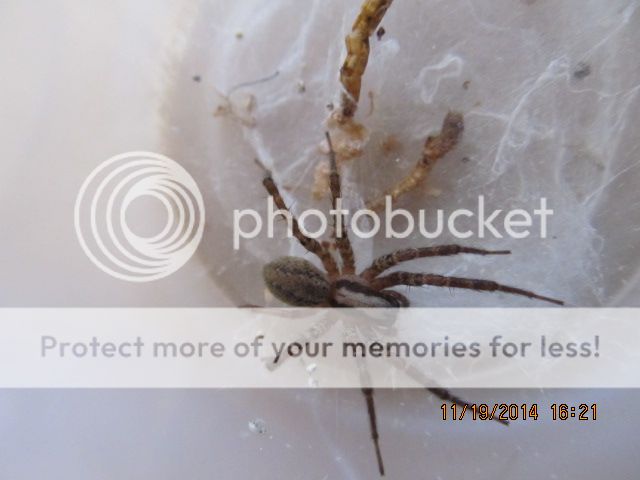...
Keeping the two spiders (Cleopatra and Neith) has taught me a lot about their behavior and habits. It has also taught me a tolerance for larger species. I can even get fairly close to the most horrid Autumn orb weaver monsters. I've attached a picture I took on Spider Bridge in Princeton, NJ about 6 weeks ago. These are some of the largest beasts I've ever seen in the orb-weaver family. (Yes, I know there are larger). I still would scream like a school girl if one of these was walking across my shoulder. But the jumpers are really different. This little girl (above with cricket) returned again tonight to the exact spot where we first met and I gave her a mini-cricket meal. So she got another hand-fed snack tonight. I've given her the name Thumper. The picture of the monster below was taken with a 50mm lens while leaning way over the bridge to within a foot or so of this lady.
...
Thumper sounds like she might become a free-range pet, sounds cute.

Ha, having one walk across your shoulder - the reason my first thought might be to squish it. Living out in the country as a kid, we sure had our share of insect visitors (especially as we slept it seemed). Woke-up many times with more than a few spider bites that burned and itched, and of course became infected from itching the bites.
The most common in my area were the so called
Wolf Spiders (Hogna carolinensis (Carolina Wolf Spider)), and some were rather huge -
like this one on Wikipedia.
Although I'm not a spider hater - if it's outside I will leave them be, and more often then not, if the web doesn't show recent catches I'll find it something to eat. I'll often carefully drop/trap moths, flies, crickets, small grasshoppers, etc. in their webs/tunnels near my sidewalk and backdoor. I like to keep them around to catch bugs before they have a chance to get inside.

A quick look at this
Indiana spider list, and I can safely say there are only very few I'm not sure if I have seen before. I remember as a kid my favorite was the
Dolomedes triton (Six-spotted Fishing Spider), as they skid around the creeks surface.







